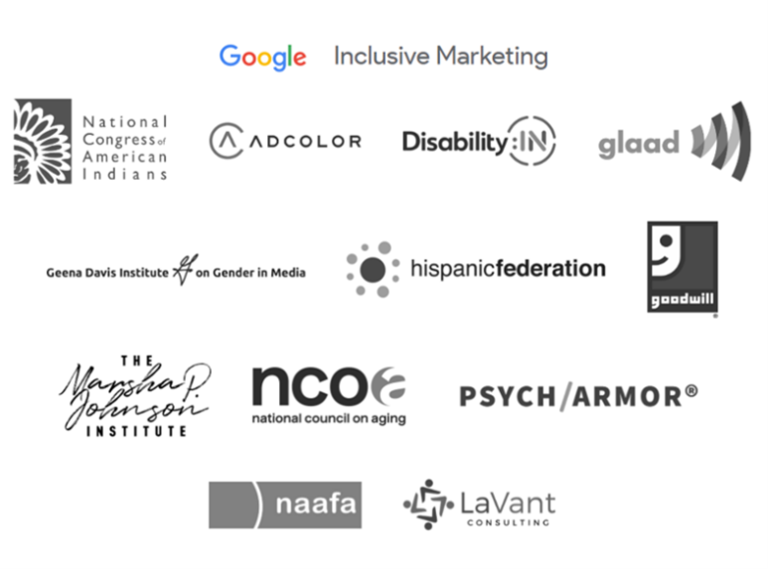
Inclusivity and Better Audience Connections

Centering Trans and Gender Fluid Communities in Your Marketing
Pride month is always an opportunity for marketers and communities to take a step back. But solutions go beyond surface-level schemes of inclusivity that are temporary. In this POV, we are tasking ourselves, our Unicorn community, and our fellow marketers to consider how to integrate gender fluidity into normalized, every day conversations between brands and people. It's important to remember that identification is individual and autonomous and, most importantly, should be self-affirming to the individual. So, we must ask ourselves: how do we ensure our marketing efforts are expansive, inclusive, and center this community?
The Rise of Gender Fluidity
For audiences who are newer to these conversations, we want to offer language and actions that center Trans and Gender Fluid communities. Trans is an identity that describes people whose gender identity differs from the sex they were assigned at birth. In some cases, Trans identity can hold space for many identities and expressions, such as gender fluid, non-binary, and/or genderqueer. Because intersectionality is a thing.
As more people accept and are open with their gender expression, interest in gender-neutral information and products continues to rise. Recent research shows a notable increase in GenZ and Gen Alpha identifying as Trans, while Google reports a 217% increase in searches related to gender-neutral topics and a 95% increase in non-binary gender-related searches in the last ten years alone. A McKinsey study also found that 48% of Gen Z consumers and 38% of consumers from other generations appreciate brands that do not categorize products by gender.
Brands offering services are expected to demonstrate the same respect for gender diversity and fluidity as what consumers expect for products. For instance, the travel industry has seen a rapid rise in a positive perception of travel companies (airlines, hotels, and tour operators) that support transgender rights and equality. According to the 24th annual LGBTQ+ tourism and hospitality survey, a vast majority of LGBTQ+ travelers (89%) stated their strong preference for these service providers. 82% of survey participants reported feeling more optimistic about a hotel or restaurant upon seeing an all-gender restroom sign.
As of April last year, the United States became one of the many countries that permit a third “gender” option in passports. And almost all major U.S. airlines have agreed to add nonbinary options for bookings and are committed to updating their computer systems by the end of 2024 to allow travelers to purchase tickets with the qualifier.
While these are important points of progress, there is still a much more focused effort needed to expand the offering of inclusive products and services and make sure they seamlessly extend to and across digital marketing.
But first, we cannot ignore that self-identification can minimize safety and personal preferences. Gender is a conventional and straightforward criterion for segmentation, making it an easy parameter to use for establishing and customizing marketing strategies. Yet, it's crucial to acknowledge that some individuals may have reservations about self-identifying due to real safety concerns and preferences. Gender distinction can also lead to gender stereotypes in marketing, which often perpetuates further separation and distracts brands from creating genuinely immersive brand experiences.
Here are two important considerations:
- Collect only necessary or no data. Collecting only necessary data can help to avoid alienating people. For brands interested in including gender-fluid audiences in their marketing targeting strategy, we recommend starting small and testing before scaling up. For example, in 2016, Airbnb added new gender options to its platform, including "Male," "Female," and "Other". However, some critics argued that the collection of gender data was unnecessary and could potentially lead to discrimination. Airbnb later revised its policy to allow hosts to avoid seeing guests' gender information, and the company now recommends that hosts do not ask for this information unless it is necessary for providing a service or complying with local laws.
- If you are collecting gender data on your site, be sure to offer multiple drop-down options and ask about individual interests only when the information is helpful to improve the quality of the offer or service. For example, in 2019, United Airlines became the first airline to add non-binary options to its booking process to be more welcoming for all and help passengers “fly how you identify”, making the important note that the customer has the right to change their identity at any moment and our personalization delivery must adjust.
Key initiatives to ensure your brand is at the forefront of inclusion:
Audit & Assess
- Assess if your brand reflects consumers' diversity throughout the entire user experience. More than simply nice-to-have, inclusive language and visual diversity in marketing campaigns is required. Help your audience see themselves reflected in the buying or booking process from start to finish.
Advocacy & Partnerships
- Establish evidence-driven trust by showing your consumers how the brand promotes equality and safety for all. Explore industry-specific inclusivity accreditation options to demonstrate how your brand participates in the change. The International LGBTQ+ Travel Association (IGLTA) offers rigorous evaluation processes, for example, IGLTA Accredited™. IGLTA assess companies in the Travel industry to ensure they offer Trans and Non-binary affirming training and meet comprehensive inclusivity criteria. This is important for all staff and travelers.
- Consider partnering with a Trans-led, community-based partner like REFUGE. This project promotes safety for gender-fluid individuals and provides a directory of safe restroom options that can be identified based on proximity to a specific location. Brands can ensure safe and secure restroom access by promoting this information for their physical location sites through REFUGE directory listings online.
Media & Marketing
- Make your customers feel safe from the beginning of their research and consideration process by anticipating their needs and answering their questions upfront. Sites such as Destination Pride or the International Lesbian, Gay, Bisexual, Trans, and Intersex Association, offer resources on worldwide LGBTQ+ laws, rights, protections, and social sentiment. For brands in the service industries, consider embedding online guides and directories across your site's product pages and provide answers to the most pertinent questions related to your industry and your brand.

- Leverage CRM to reach gender-fluid audiences. Although there are no data exchanges that accommodate LGBTQ+ identifiers, businesses can still use gender-expansive messaging to target audiences interested in specific topics, ultimately fostering trust and support. Based on engagement, you can leverage first-party data to add personalization across the paid, owned, and earned ecosystem and even have the ability to use appropriate pronouns in messaging.
- Leverage free online research tools such as Google Keyword Planner and Google Trends to understand which inclusivity-related questions are being asked. For example, we learned that consumer search demand for “LGBTQ travel"-related information increased by 82% in 2023 compared to last year. With partners like Revry, explore media and content partnerships to bring these insights to life in a way created by and for the Trans community.
Creating Trans and gender-fluid, inclusive products and on-site solutions is important because people are becoming more comfortable with expressing and identifying themselves however they want, whenever they want. The people are in control, and marketers who prioritize inclusivity throughout the entire user experience will have the hearts and wallets as a competitive advantage, all because they make even the most historically excluded consumer feel valued, seen, and welcomed.
